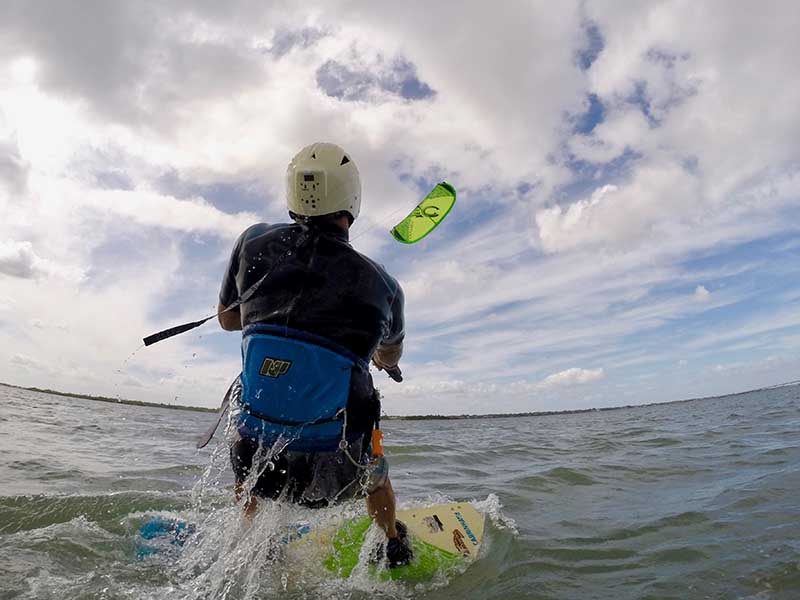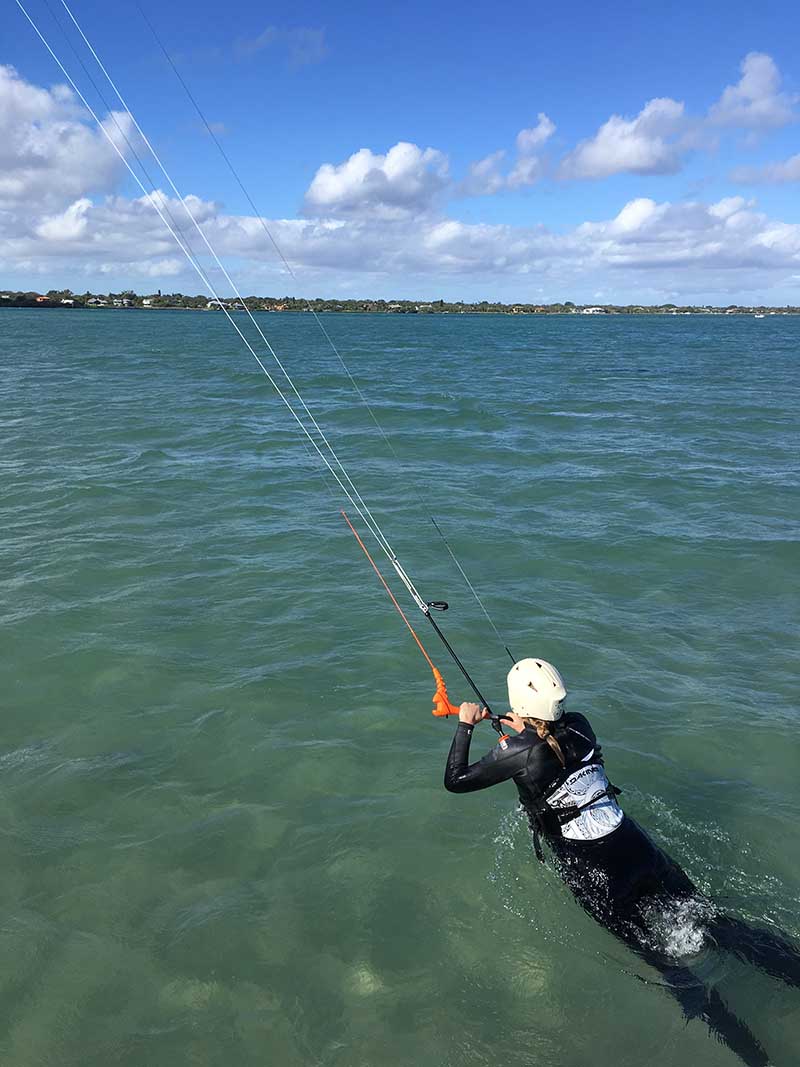
By Capt. Bill Swezey
Throughout your first kiteboard lesson, you will learn a ton of new things. Some may agree with your expectations of the sport and some may contradict what you may have previously thought. Though most of everything you will learn throughout your first lesson is important, the first ten minutes may be the most important. This part of the lesson is all about the wind and how different aspects of the wind relate to what we do. This sets the stage for the entire sport.
The first thing we have to take a good look at when planning a kiteboard session is the wind direction. Most people kiteboard on the ocean in Florida after they have taken a few lessons and become self-sufficient. The beaches in Florida generally run north and south. The best wind directions for kiteboarding off the beach in Florida are north to northeast and south to southeast. A north or south wind is a “sideshore” wind and is blowing parallel to shore. This wind makes it easy to ride out into the ocean and ride back to shore. Even if you can’t stay upwind you can get back to the beach and walk upwind to where you started. A northeast or southeast wind is a “side-onshore” wind and has the same benefits as a side-shore wind although it may blow you back to shore a little sooner. An east wind is an “onshore” wind and is tough for beginners and sometimes even intermediate riders because the wind tends to blow them back onto the shore rather quickly. A west wind is an “offshore” wind and no one should ever kite in an offshore wind or anything with an offshore component on the ocean.
Once you decide it is a good wind direction, you need to decide what size kite you are going to use. This depends on three things: weight, skill level, and wind speed. Wind speed for kiteboarding is broken up into three simple groups: light wind 10-15 knots, medium wind 15-20 knots, and heavy wind 20-30 knots. We have covered this topic in previous articles but for quick reference a perfect quiver for a self-sufficient 170-pound rider would be an 8m for heavy wind, an 11m for medium wind and a 15m for lighter wind give or take a kite size. Most beginners start with just one or two kites based on their weight and what the conditions are usually like in their area. When we say 15m this means the surface area of the kite is 15 square meters. For your first lesson, you will use a kite a few sizes smaller than what you would normally use but even this will be plenty of power to get up on the board.

The wind window is best explained visually and with a quick Google search you will come across multiple 3D diagrams showing exactly what the wind window is. We always assess the wind window with the wind directly at our back. If we were to point our hands straight overhead we would be pointing to 12 o’clock or the neutral zone. Just to the right and down from that is 1 o’clock, a bit further is 2 and on the water to your right is 3 o’clock. If you point to 3 o’clock you would be pointing almost directly perpendicular to the wind. The opposite side would be 11, 10, and 9 o’clock where 9 o’clock is on the water to your left. These numbers and semi-circle shape are the “edge of the wind window” and when the kite is nice and steady on the edge of the wind window there is relatively little power. We always launch and land at 9 and 3. Directly downwind of us is the “power zone” and the closer we fly the kite into the center of the “power zone” the more power we will get from the kite.
If you are brand new to the sport, there is no doubt your head is already spinning with information. It is at this point in a lesson where we begin to get hands on and instead of thinking and theorizing about aspects of the wind and kiteboarding we start to be able to “feel” everything. Through feel we begin to understand very well where the edge of the wind window is and where the power zone is. So, if you are thinking of taking a kiteboard lesson don’t get hung up on something you may not understand or a concept that is foreign to you in words but wait until you can get your hands on a kite and you will gain a great sense of what the sport is all about.
FORECAST BY: Capt. Bill Swezey
New Wave Kiteboarding
Email: Jeremy@newwavekiteboarding.com
Website: NewWaveKiteboarding.com
Find us at Sailfish Marina in Stuart, FL
(561) 633-9362




